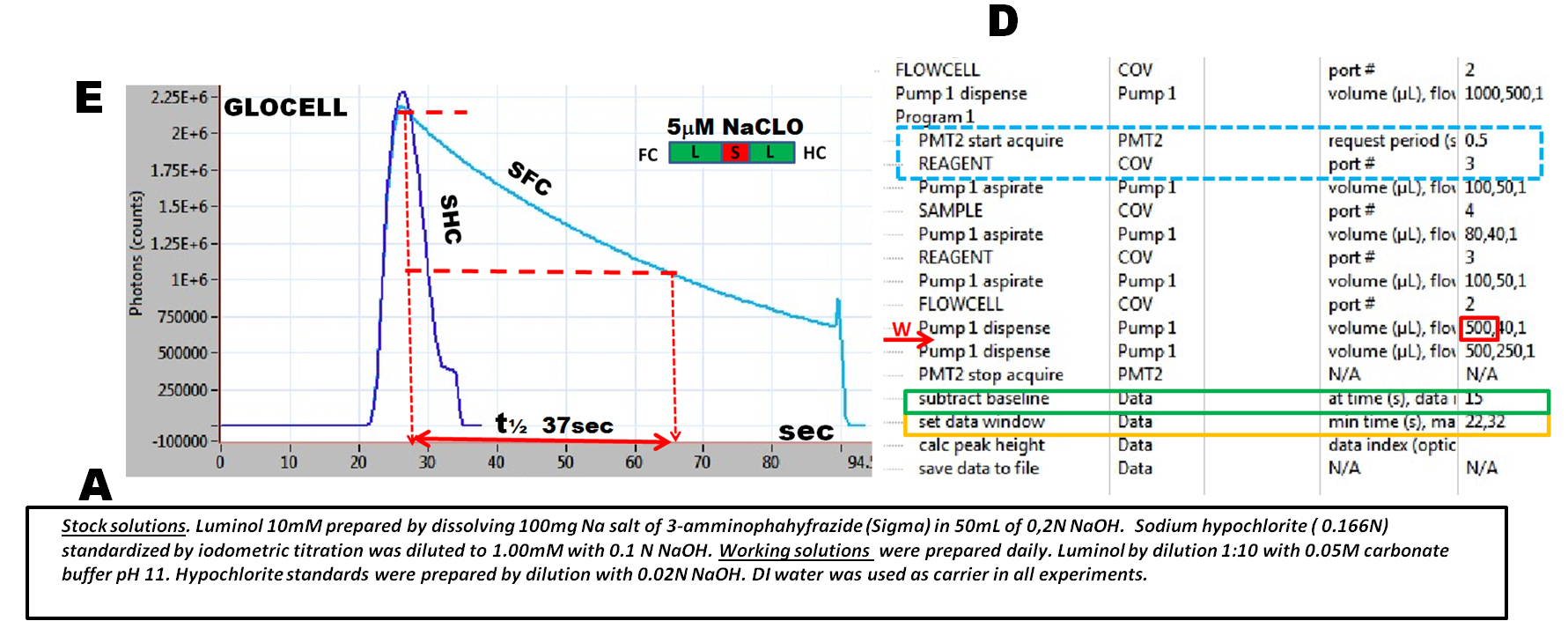The luminol-hypochlorite reaction is well suited for study of efficiency of flow cell design, because its light output can be well reproduced by controlling pH, and because the stock solutions of luminol and hypochlorite are easy to prepare (A), and are stable up to three weeks if stored refrigerated.
Chemiluminescence in SIA-LOV Format
2.3.12.
The fast rate of hypochlorite/ luminol reaction and the transient nature of its light output necessitates rapid mixing of reactants and their fast transfer into the flow cell. In the miniSIA instrument (B), sample reagent sequencing in the sandwich configuration (C) provides rapid and efficient mixing, when using the SHC software protocol (D). The peak recorded in the SHC mode (E) was obtained as the reaction mixture moved from the holding coil and trough the flow cell at a rate of 40mcrL/second. Next, the rate of decay of chemiluminescence was recorded in SFC mode (E), by arresting reaction mixture within in the flow cell for 45 seconds. This was achieved by modifying the software protocol (D) by reducing the dispensed volume from 500crL to 320mcrL (red box) , and by inserting 45 seconds wait time (arrow W) into the script. The thus measured half decay time of 37 seconds indicates, that 8 second transport time (320/40), from holding coil to flow cell is short enough, to allow capturing the majority of the transient luminescence, and therefore mixing of reactants in the holding coil controlled by SHC protocol was adopted for all following experiments .











